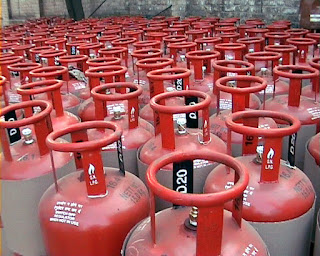With Cyclone Nilam over Bay Bengal expected to hit the coastal areas of Tamil Nadu and Andhra Pradesh by the evening on Wednesday, the authorities in two southern states are on high alert.
According to the Director, Chennai Metrological Department, Ramanna, “The cyclone is 270 kilometres away from Chennai. It is expected to make landfall by 5 pm. Cyclone Nilam is heading northwest to cross anywhere between Nagapattinam in Tamil Nadu and Nellore in Andhra Pradesh during the next few hours.”
The Met official also warned that destructive winds and rains unleashed by the cyclone are likely to disrupt daily lives in Tamil Nadu and adjoining south Andhra Pradesh.
Heavy to very heavy rain is expected during the next 24 to 48 hours at many places in Tamil Nadu with widespread moderate rain over most of the places in the state. South Andhra Pradesh, Tamil Nadu, Kerala and Karnataka would also be affected by the cyclone as many places would receive rain with heavy spells at a few places during the next couple days.
As per the Met officials, Nagapattinam, Thiruvarur, Tanjavaur, Tiruchirappalli, Cuddalore, Pondicherry, Villupuram, Kanchipuram, Chennai, Tiruvannamalai, Vellore and Tiruvallur districts in Tamil Nadu and Nellore, Chittor, Anantapur, Cuddapa and Kurnool districts in Andhra Pradesh will be the most affected by the cyclone.
Some places in Kerala would also experience the impact of this cyclone.
Telecommunication, Electricity, Rail, Road and Flights services will be affected by the cyclone. The coastal areas would be most affected as along with very heavy rain, they also have to encounter the high tides causing floodings.
The cyclone, some 500 km away in the southwest in the Bay of Bengal is said to be fast moving in a northwest direction. After landing it would weaken as it will lose most of its energy and would then approach again in the same direction. It is expected to become a low after the next 72 hours.
The Met department said, “Rainfall is expected at most places over coastal Tamil Nadu and Andhra Pradesh. Wind speed would reach around 80 kmph and prevail along and off north Tamil Nadu, Puducherry and adjoining south Andhra Pradesh coasts as Nilam nears its landfall.”
The sea condition will be rough along and off north Tamil Nadu, Puducherry and south Andhra Pradesh coasts during the next 36 hour.
Storm surge of about 1 to 1.5 metre over the astronomical tide is likely to inundate the low lying areas of Chennai, Kanchipuram and Tiruvallur districts in Tamil Nadu and Nellore district of Andhra Pradesh.
Standing crops - paddy, groundnut and maize - in coastal districts of Tamil Nadu and Andhra Pradesh are likely to be damaged, said a weather bulletin.
The Tamil Nadu government has announced holiday for schools and colleges in the coastal districts.
Five coastal districts in Andhra which are in Nilam's path are on alert. Fishermen have been advised not to venture out in sea till the storm settles. Rescue and relief teams are also on standby and shelters being prepared in case evacuation becomes necessary.
The disaster management agency of the state is supervising the precautionary arrangements being taken by the local administration to minimise the loss of human life and property in case of any eventuality.
The Chennai port on the southeast coast has stopped cargo operations after a cyclone warning.
According to the Director, Chennai Metrological Department, Ramanna, “The cyclone is 270 kilometres away from Chennai. It is expected to make landfall by 5 pm. Cyclone Nilam is heading northwest to cross anywhere between Nagapattinam in Tamil Nadu and Nellore in Andhra Pradesh during the next few hours.”
The Met official also warned that destructive winds and rains unleashed by the cyclone are likely to disrupt daily lives in Tamil Nadu and adjoining south Andhra Pradesh.
Heavy to very heavy rain is expected during the next 24 to 48 hours at many places in Tamil Nadu with widespread moderate rain over most of the places in the state. South Andhra Pradesh, Tamil Nadu, Kerala and Karnataka would also be affected by the cyclone as many places would receive rain with heavy spells at a few places during the next couple days.
As per the Met officials, Nagapattinam, Thiruvarur, Tanjavaur, Tiruchirappalli, Cuddalore, Pondicherry, Villupuram, Kanchipuram, Chennai, Tiruvannamalai, Vellore and Tiruvallur districts in Tamil Nadu and Nellore, Chittor, Anantapur, Cuddapa and Kurnool districts in Andhra Pradesh will be the most affected by the cyclone.
Some places in Kerala would also experience the impact of this cyclone.
Telecommunication, Electricity, Rail, Road and Flights services will be affected by the cyclone. The coastal areas would be most affected as along with very heavy rain, they also have to encounter the high tides causing floodings.
The cyclone, some 500 km away in the southwest in the Bay of Bengal is said to be fast moving in a northwest direction. After landing it would weaken as it will lose most of its energy and would then approach again in the same direction. It is expected to become a low after the next 72 hours.
The Met department said, “Rainfall is expected at most places over coastal Tamil Nadu and Andhra Pradesh. Wind speed would reach around 80 kmph and prevail along and off north Tamil Nadu, Puducherry and adjoining south Andhra Pradesh coasts as Nilam nears its landfall.”
The sea condition will be rough along and off north Tamil Nadu, Puducherry and south Andhra Pradesh coasts during the next 36 hour.
Storm surge of about 1 to 1.5 metre over the astronomical tide is likely to inundate the low lying areas of Chennai, Kanchipuram and Tiruvallur districts in Tamil Nadu and Nellore district of Andhra Pradesh.
Standing crops - paddy, groundnut and maize - in coastal districts of Tamil Nadu and Andhra Pradesh are likely to be damaged, said a weather bulletin.
The Tamil Nadu government has announced holiday for schools and colleges in the coastal districts.
Five coastal districts in Andhra which are in Nilam's path are on alert. Fishermen have been advised not to venture out in sea till the storm settles. Rescue and relief teams are also on standby and shelters being prepared in case evacuation becomes necessary.
The disaster management agency of the state is supervising the precautionary arrangements being taken by the local administration to minimise the loss of human life and property in case of any eventuality.
The Chennai port on the southeast coast has stopped cargo operations after a cyclone warning.





